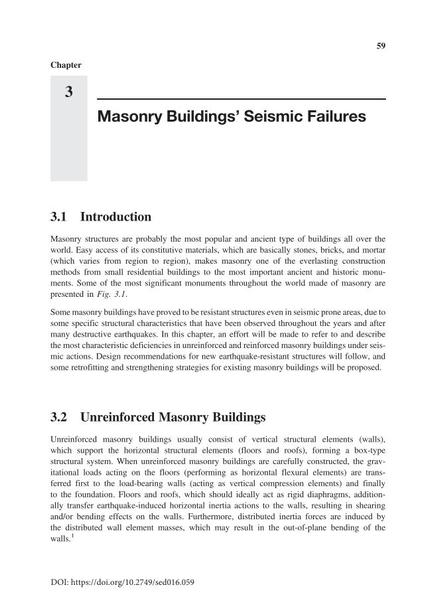Masonry Buildings' Seismic Failures

|
|
|||||||||||
Détails bibliographiques
| Auteur(s): |
Eftychia Apostolidi
|
||||
|---|---|---|---|---|---|
| Médium: | chapitre de livre | ||||
| Langue(s): | anglais | ||||
| Publié dans: | Characteristic Seismic Failures of Buildings | ||||
|
|||||
| Page(s): | 59-148 | ||||
| Nombre total de pages (du PDF): | 90 | ||||
| Année: | 2019 | ||||
| DOI: | 10.2749/sed016.059 | ||||
| Abstrait: |
Masonry structures are probably the most popular and ancient type of buildings all over the world. Easy access of its constitutive materials, which are basically stones, bricks, and mortar (which varies from region to region), makes masonry one of the everlasting construction methods from small residential buildings to the most important ancient and historic monuments. Some masonry buildings have proved to be resistant structures even in seismic prone areas, due to some specific structural characteristics that have been observed throughout the years and after many destructive earthquakes. In this chapter, an effort will be made to refer to and describe the most characteristic deficiencies in unreinforced and reinforced masonry buildings under seis-mic actions. Design recommendations for new earthquake-resistant structures will follow, and some retrofitting and strengthening strategies for existing masonry buildings will be proposed. |
||||

